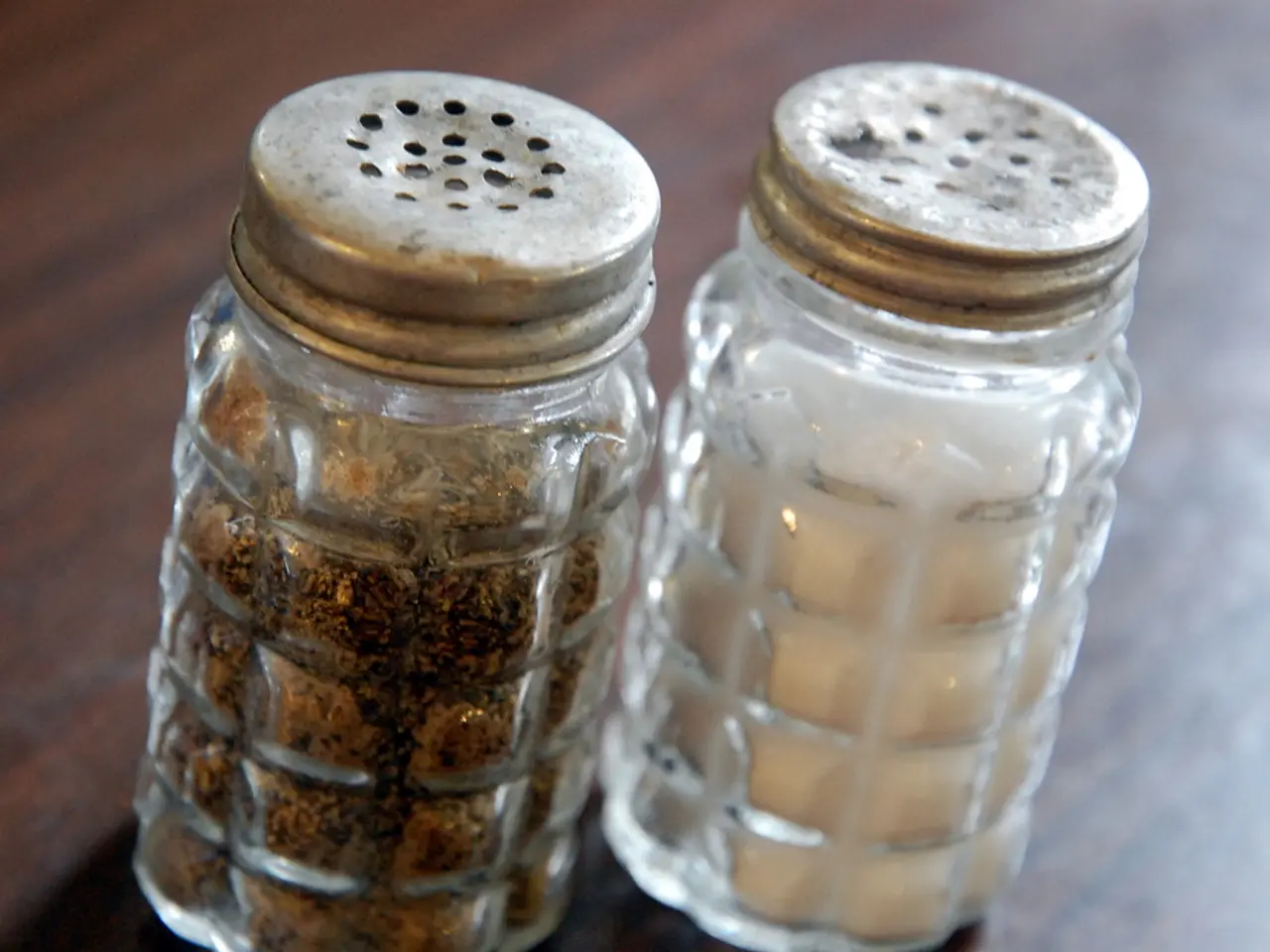Healthy and Flavorful Alternative: Opting for Low-Salt Cheeses
In the quest for a heart-healthy diet, managing sodium intake is crucial. Here's a breakdown of various cheese options and their sodium content, along with tips for maintaining a low-sodium cheese consumption.
One popular cheese, Feta, contains approximately 316 mg of sodium per ounce. However, opting for fresh cheeses like Mozzarella and Burrata is a better choice, as they contain about 60 to 85 mg of sodium per ounce, thanks to their high moisture content and minimal added salt.
Swiss Cheese, with its 50-75 mg of sodium per ounce, is another viable option. On the other hand, Processed cheese (American) can have significantly higher sodium levels, with approximately 406 mg of sodium per ounce.
Aged cheeses such as Parmesan and blue cheese have more sodium due to longer processing. Cheddar cheese also falls into this category, with approximately 180 mg of sodium per ounce. Goat Cheese, however, is a slightly lower-sodium option, with 80-130 mg of sodium per ounce.
For those seeking low-sodium options, fresh mozzarella or burrata, Boar's Head Low Sodium Muenster, and La Serenisima Saint Paulin Light Cheese are excellent choices. Boar's Head Low Sodium Muenster offers a mellow, smooth cheese with reduced sodium compared to the regular version. La Serenisima Saint Paulin Light Cheese is low in sodium and fat, making it ideal for a heart-healthy diet.
Rinsing Feta and Cottage cheese under water can help remove excess salt. Reading labels carefully can also help find "low-sodium," "reduced-sodium," or "no salt added" cheeses.
To reduce sodium content in cheese consumption and support heart health, it's recommended to choose fresh cheeses or products labeled "low sodium" or "no added salt." Avoiding heavily processed cheeses such as American cheese, which can have very high sodium levels, is also advisable. Limiting portion sizes of higher sodium cheeses and incorporating other sources of protein and calcium, such as lean meats, yogurt, beans, and leafy greens, can further help. Opting for minimally processed foods that are lower in saturated fat, fiber-rich, and low in sodium overall is also beneficial.
The American Heart Association recommends no more than 2,300 mg per day (ideally 1,500 mg for those with hypertension). Excessive sodium intake is linked to high blood pressure, heart disease, and stroke. By following these guidelines, you can enjoy cheese while maintaining a balanced and heart-healthy diet.
- Incorporating fresh cheeses like Mozzarella and Burrata into a diet is a wise choice due to their low sodium content, making them beneficial for a heart-healthy lifestyle.
- Aged cheeses such as Parmesan and blue cheese have higher sodium levels, making them less ideal for those seeking lower sodium options.
- To remove excess salt from certain cheeses like Feta and Cottage cheese, consider rinsing them under water before consumption.
- To maintain a balanced and heart-healthy diet, it's suggested to opt for fresh cheeses, low-sodium labeled products, or minimally processed foods that are lower in sodium overall.




